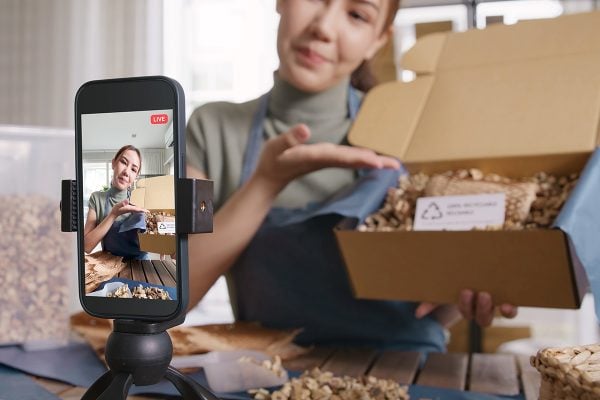“We remove friction from the moment of inspiration to purchase,” is how Ethan Arpi of Instagram summarises the social network’s mission in supporting sellers growth.
How Instagram started
Speaking at Retail Week Live yesterday, Ethan Arpi, shopping product marketing lead of Instagram starts recalling the time when the company was launched.
In 2010, Instagram was introduced when phone cameras weren’t so good so filters served as a way to make images better, and help people express themselves through photography. In 2014, Instagram introduced video to represent an idea of time and sound of someone’s daily journey.
Two years later, they announced stories so people can share ‘stories’ about their lives, which disappear after 24 hours. Last week, Instagram introduced a checkout solution in the US which sees shoppers directly purchasing brands’ products from the platform. Some 22 US businesses are already using the checkout tool including GymShak and Burberry. Instagram are currently testing the new service to roll it out to the UK and globally.
The start of selling on Instagram
When Instagram introduced stickers, it paved a path for retail trading on the platform. The initiative enabled businesses to survey their followers on queries such as ‘ should we invest in this colour, would you like to see more of this product.’ Shoppers were given two options to either vote for ‘yes’ or ‘no.’ This allowed sellers to discover their audiences’ core needs, wants and desires to use this insight to enhance their product offering.
Ethan also says that the shoppable element of Instagram ‘exploded’ when more brands were joining the platform and sparking shopper’s interest in their products. People would discover brands and take screenshots of their products, says Ethan, and also would comment I love this green jacket, where can I get it from?’ and brands kept posting links in the commentary section to their product pages. In a quest to removed the friction from a moment of inspiration to purchase, Instagram started featuring sellers’ product catalogues to enable shoppers to buy merchants’ products in a few clicks. Ethan says that Instagram have added a lot of complexity into their app but made the shopping experience easy.
While Ethan emphasises that Instagram isn’t a retailer or brand but a tech company, they have a lot to offer to the retail businesses. He says Instagram helps sellers acquire new clientele and loyalty. Instagram currently boasts about 1bn of active users, with 52% of consumers are using the platform more than last year, and 31% are expecting to use it even more in the coming year, according to Instagram’s own survey. Some 140m Instagram users are currently interacting with retail brands, with these figures are expected to grow.
Instagram competitive advantages
With this in mind, Ethan carries on counting many competitive advantages of Instagram for businesses. He says one of them is that Instagram aren’t trying to support shopping per se but the experience around shopping. Ecommerce is invested in an idea of accelerating chores as fast as possible, says Ethan, but we’re oppositive – we celebrate the fun of shopping. As Instagram invested in the shopping, the focus sharpened on inspiration and delivering what relevant for a shopper. Consumers can now share a product with their friends on Instagram which works as a recommendation tool for friends and family. This forms part of our mission to bring you closer to people and things you love, says Ethan.
How Instagram supports sellers
When asked about how Instagram supports sellers, he said that the company offers a three-pronged benefits scheme.
1 Simplicity of purchase
First, is the simplicity of purchase. On traditional platforms you have a lot of editorial content accompanied by product catalogue, says Ethan, Instagram displays you a product without unnecessary information. He says that by introducing the checkout, Instagram mitigated the risk of abandoned baskets.
2 Product stories
Instagram gives the ability to tell a product story and bring a brand to live. Consumers can now shop a product via a video feed. This bridged the imagination gap, reassures shoppers and lowers the likelihood of refunds. For instance, they can watch how a certain pair of jeans fit multiple body types. Pointing to an example of Bershka and Converse using videos to show how to style differently trainers according to individuals’ style and mood, he says that this showcases fun shopping. At the same time, Armani is featuring Chinese celebrities in their latest collections to attract the Chinese community. He says that this is particularly attractive to young consumers who want to purchase from shops which reflect their interests and values.
3 Scale
Sellers can now curate their storefront on Instagram in a bid to create a personalised destination for their shoppers. Ethan says that Instagram is a creative pool, where sellers can aquire customers and solidify loyalty.
Learn from others
Finishing up his keynote ‘engaging the mobile shopper,’ he encouraged sellers to follow one another and learn from the best creative practices; whether it’s getting social media influences on board, make-up artists or bloggers – it’s all about engaging and influencing shoppers’ behaviour.









